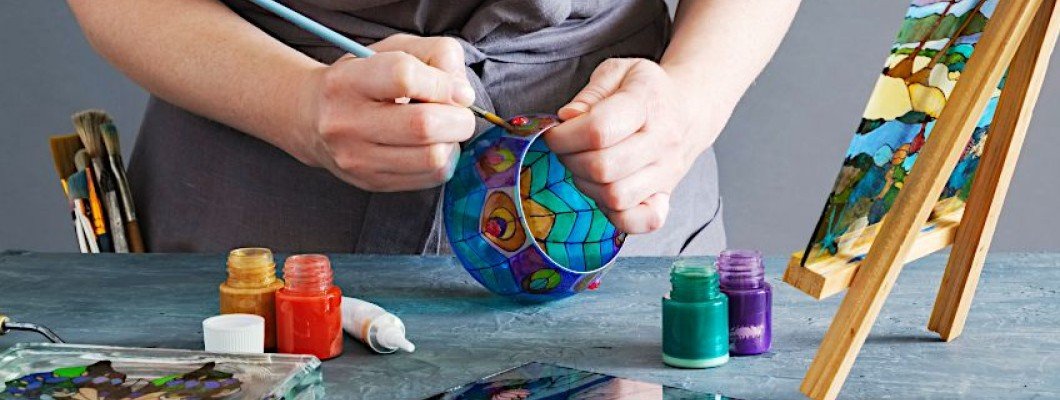
Glass painting is a fun and creative way to add a personalized touch to any glass surface. Whether you want to create a unique piece of home decor or a one-of-a-kind gift, glass painting is a versatile and accessible art form that anyone can enjoy.
Materials needed for stained glass
Before you start making stained glass, you need to acquire some basic materials. Here's a checklist of what you'll need:
Glass Surfaces: You can paint on any type of glass surface, from vases and decanters to wine glasses and picture frames. Make sure the glass is clean and dry before you start painting.
Glass paint: Several types of glass paint are available, including water-based and oil-based paints. Some colors require heat setting or baking to last forever, while others can be air dried. Choose a color to suit your particular glass surface and painting method.
Brushes: You'll need a variety of brushes for different types of painting, including fine detail brushes for intricate designs and larger brushes for filling large areas.
Additional tools: Depending on your painting skills, you may need additional tools such as stencils, tape, or a palette for mixing paint.

Tips for Glass Painting
Glass painting can be a bit tricky at first, but with a few tips and tricks, you'll be creating beautiful designs in no time. Here are some tips to help you get started:
Practice on a test surface: Before you start painting on your final glass surface, practice on a test surface like a piece of scrap glass or a glass jar. This will help you get a feel for the paint and the brushes, and give you a chance to experiment with different techniques.
Use thin layers of paint: When painting on glass, it's best to use thin layers of paint rather than thick, heavy layers. This will help prevent the paint from dripping or peeling, and will also make the colors more vibrant.
Let the paint dry completely: Glass paint can take several hours or even overnight to dry completely. Make sure each layer of paint is dry before adding another layer, and avoid touching the surface until the paint is fully dry.
Clean up mistakes with rubbing alcohol: If you make a mistake or need to clean up excess paint, use a cotton swab or cloth dipped in rubbing alcohol to remove the paint. This will also help remove any fingerprints or oils on the glass surface.
Follow the manufacturer's instructions: Glass paints can have different application and curing methods, so it's important to read the manufacturer's instructions carefully before starting your project. Some paints require baking or heat-setting to make them permanent, while others can air dry. Follow the instructions for best results.
Glass painting can be a fun and rewarding hobby for anyone who loves art and creativity. With a little practice and some basic materials, you can create beautiful designs on any glass surface. Try out different techniques, experiment with colors and designs, and see where your imagination takes you!

Leave a Comment